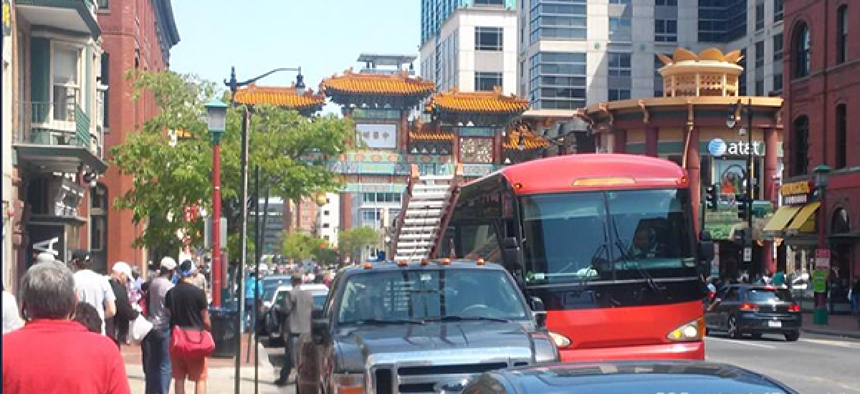DC pulls tech into the parking space

The ParkDC pilot will leverage sensors, mobile cameras and dynamic pricing in an effort to reduce parking congestion in Washington, D.C.
Parking in Washington, D.C., was hectic before the Metro shutdowns. Now with even more cars on city streets, drivers searching for a parking space are worsening congestion and traffic jams, which not only creates problems for parking and law enforcement, but can impact city and emergency services as well.
Fortunately, the District Department of Transportation (DDOT) started working in 2012 to find new methods to fight curbside congestion. The ParkDC pilot was started in March in the Chinatown and Penn Quarter sections of the city and will leverage innovative parking technology and dynamic pricing.
According to DDOT Director of Research Soumya Day, studies have indicated that as much as 25 to 30 percent of traffic in the district can be attributed to people circling blocks looking for parking spaces on the street.
“What we really wanted to do with this pilot is see how we could push the application of performance pricing and real-time parking availability in the parking industry,” Day told GCN. She said the city wanted “parking pricing based on demand and real-time parking availability [data delivered] … to customers in a more cost-effective manner.”
Although pilot projects in Los Angeles and San Francisco placed sensors in each parking space to determine when a car was in the space and for how long, Day said that in the long term, using a sensor for every parking spot is not a sustainable business model for a municipality. So DDOT worked to augment information from the sensors with data from other sources to determine if a spot was open.
“That’s what this pilot is all about: How do you use fewer assets in the field and fill in the gaps between sensors with data from other parts of the parking ecosystem?” Day said. “All of our meters are tied to a network so we know how many transactions are happening on each meter, so we use that as a data point. We also use pay-by-cell, which has been enormously successful. Fifty-five percent of our parking revenue is done through pay-by-cell, so we’re using that as a data point. And we’re also using [data from] enforcement.”
In addition to 500 sensors placed around the Chinatown and Penn Quarter neighborhoods, the pilot is using cameras with software that can detect whether spaces are open.
“We have six cameras that are trailer mounted and mobile, and we’ve moved them around the study area to capture occupancy information 24/7 for about a week to give us a good snapshot on the behavior on each block.” Day said.
Although the pilot has been running for only a few months, Day said they’ve uncovered some interesting information.
“The first thing we found is that payment data is not a good indicator of occupancy,” Day said. “Sometimes people may pay for an hour of parking but only stay for half an hour, and others may park and not pay,” she said.
“The second thing we found is that there can be significant variations in curb space characteristics and usage -- not only block by block but also by time of day and day of the week,” she added. Additionally, on any given block, some spaces might be more attractive and in demand than others.
The pilot will run through 2017 so that DDOT can test different levels of on-demand pricing.
“We are in the process of changing the pricing algorithms so we can determine what kind of business rules” apply to performance-based pricing, Day said. “We’re also working with vendors to develop an app that shows people real-time parking availability.”
“Americans spend hours stuck in traffic every year, ” Matt Darst, Xerox VP of parking and mobility told GCN. “That’s a problem we can solve using technology and analytics to give some of those hours back.”
NEXT STORY: Data Download: Measures to Meaning Part I





